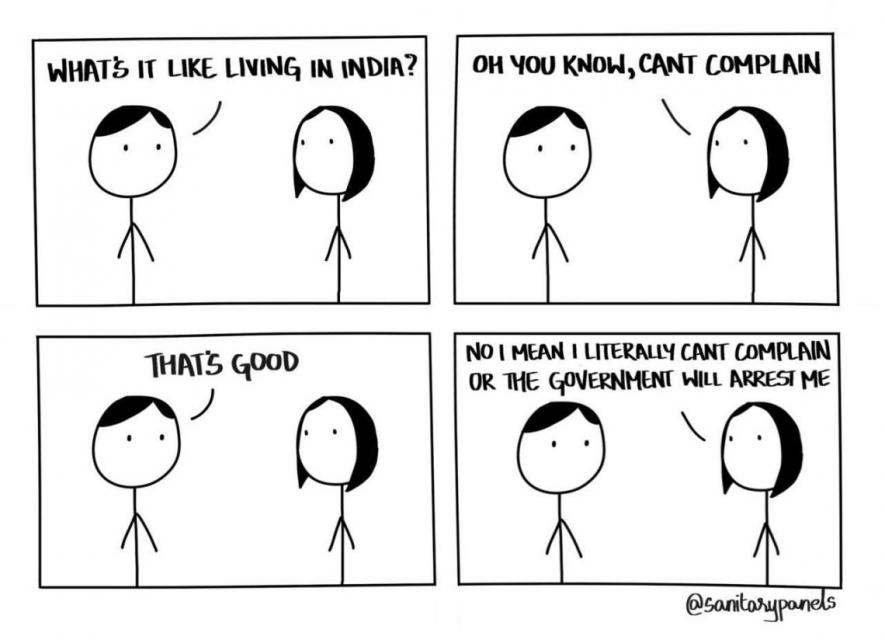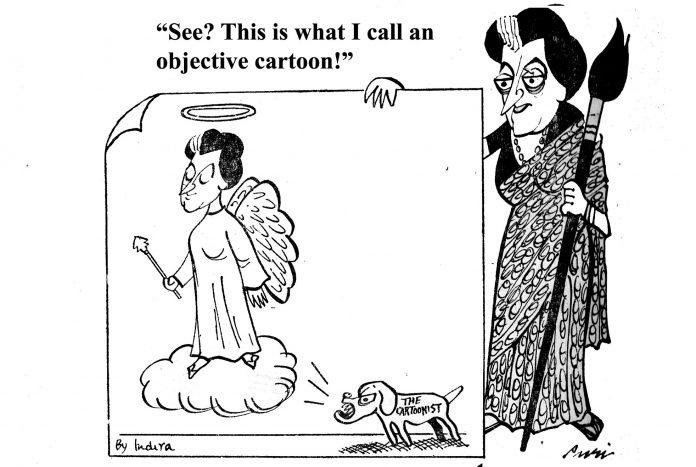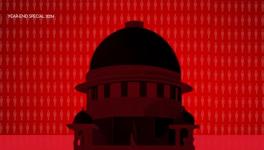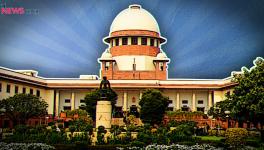Killing the Messenger Who Made the Caricature

Following contempt proceedings against Prashant Bhushan in the Supreme Court, there have been a slew of such cases against individuals, especially comedians and illustrators who have lampooned the Court. But is the faith in the judiciary so fickle as to be denigrated by caricatures shared on a social networking platform? Are judges so sensitive to the winds of public opinion? Aren’t they supposed to be men of fortitude, able to thrive in a hardy climate? These are some of the observations made by various courts on this issue, write ARNESH NAG and MEHAK NAYAK.
——-
In the history of the Indian republic, contempt of court has been an issue at the interstice of protecting the administration of justice and securing the freedom of speech and expression. The Indian Constitution guarantees this freedom under Article 19(1)(a). However, its exercise comes with certain “reasonable restrictions”.
In 1949, the Constituent Assembly discussed an amendment to include contempt of court in the “reasonable restrictions” on freedom of speech. R. K. Sidhva, a member, succinctly asked: “After all, Judges have not got two horns; they are also human beings. They are, liable to commit mistakes…Why do you want to put that in the Constitution and make the Judge above everybody? You want to make him a Super God.” Responding to the various arguments, B. R. Ambedkar contended that if contempt of court is not included as a “reasonable restriction”, all pre-existing laws governing contempt would stand abrogated for being inconsistent with fundamental rights. Subsequently, the amendment was adopted.
Contempt Proceedings Against Individuals
Recently, the attorney general granted consent to initiate criminal contempt proceedings against comic illustrator Rachita Taneja for her tweets. A plea has since been filed in the Supreme Court. This follows a series of requests seeking initiation of criminal contempt proceedings against various individuals following the conviction of Prashant Bhushan of criminal contempt.

A comic strip by Rachita Taneja. Courtesy: Twitter
The earliest of Taneja’s concerned tweets, shared in August, contain her pictorial criticism of the preceding Chief Justice of India, Justice Ranjan Gogoi. The second tweet reads: “Arnab gets bail, real journalists get jail, independent judiciary is fail.” It contains an illustration of the Supreme Court building with a saffron flag flying atop; the text in the image reading “Sanghi Court of India”. The third tweet features a caricature depicting a stick-figure of Arnab Goswami standing in between two stick-figures labelled “BJP” and “Supreme Court” with Goswami’s figure saying, “Tujaantanahimerabaapkaunhai” (“You do not know who my master is”). These later tweets were shared in November in response to the swift hearings in the grant of interim bail to Goswami. Taneja had, in fact, shared the Supreme Court building illustration first in August without the in-text to criticise Prashant Bhushan’s conviction.
Lord Tom Denning, an English judge, observed in a 1968 English case: “We will never use this (contempt) jurisdiction as a means to uphold our own dignity. That must rest on surer foundations.”
Earlier, the attorney general had also granted consent for criminal contempt proceedings against stand-up comedian Kunal Kamra, whose tweets, also in response to the interim bail of Goswami, caused a brouhaha. It led the Joint Parliamentary Committee on Data Protection Bill to question Twitter regarding its policy to delete “offensive” tweets and suspend accounts. The expeditious relief in Goswami’s case should be seen against the arduous process it takes to ensure the most essential human rights for several activists and political prisoners languishing in jails.
Senior lawyer Kaleeswaram Raj has referred to Kamra’s tweets as a form of “institutional criticism”. Taneja’s tweets too are a criticism in their own form. They are representative of the anguish shared by many. But such considerations are futile, for the attorney general found Taneja’s tweets to imply that the Court was biased towards the BJP, that they undermine public confidence in its independence and impartiality and lowers its authority.
The Jurisprudence of Criminal Contempt
The attorney general’s observations on Taneja’s tweets may cause one to ask—is the faith in the judiciary so fickle as to be denigrated by caricatures shared on a social networking platform?
Lord Tom Denning, an English judge, observed in a 1968 English case: “We will never use this (contempt) jurisdiction as a means to uphold our own dignity. That must rest on surer foundations.” This has also been considered by the Indian apex court. In the English case, the Court had held: “Criticism of the court and of judicial decisions, however rumbustious, whether or not in good taste, and despite its inaccurate statement of fact, was not a contempt of court but was within the limits of the inalienable right of every individual to freedom of speech which the courts had always unfailingly upheld.”
In India, as distinguished from civil contempt, the Contempt of Courts Act (1971) classifies the publication of any matter, or doing any other act, “scandalising” or “tending” to “scandalise”, lowering or “tending” to lower the authority of the court as criminal contempt. Lawyer Gautam Bhatia has noted that this allows “pure speech” to be punished merely for its content.
The Supreme Court has held: “Any caricature of a judge calculated to lower the dignity of the court would destroy, undermine or tend to undermine public confidence in the administration of justice or the majesty of justice…imputation of lack of impartiality or fairness to a judge in the discharge of his official duties amounts to contempt.”
In 2012, the Law Commission in England traced the justification of this offence to an undelivered opinion in a 1765 case. It argued that it was “to keep a blaze of glory around them (judges), and to deter people from attempting to render them contemptible in the eyes of the public”. The Law Commission deduced: “The purpose of the offence is not confined to preventing the public from getting the wrong idea about the judges, and that where there are shortcomings, it is equally important to prevent the public from getting the right idea”. Subsequently, its recommendation that “scandalising the court” should cease to exist as an offence was implemented. In England, however, no one had been convicted of the offence since the 1930s.
Following English Jurisprudence
For Indian courts, this development is of significant importance, as its understanding of criminal contempt has been historically informed by English jurisprudence. However, the Indian Law Commission, in 2018, recommended against abolishing the offence.
The Indian Supreme Court has clarified that the criminal contempt jurisdiction is not intended to uphold the personal dignity of judges but to “inhibit sullying essays on the administration of justice in which the public have a vital interest and not to warn off or victimise criticisms, just or unjust, of judges as citizens, administrators, non-judicial authorities, etc.”. The Court seeks only to prevent criticism “which hampers the administration of justice or which erodes the faith in the objective approach of judges”. It opposes the attribution of motives to judges, and any criticism “scandalising the court” is, according to it, hostile.
The Court also held: “Any caricature of a judge calculated to lower the dignity of the court would destroy, undermine or tend to undermine public confidence in the administration of justice or the majesty of justice…imputation of lack of impartiality or fairness to a judge in the discharge of his official duties amounts to contempt.” Most recently, it was observed: “If a scathing attack is made on the judges, it would become difficult for them to work fearlessly and with the objectivity of approach to the issues.”
Ergo, a parsing of the Indian judicial pronouncements would evince that faith in the judiciary is unassailable.
If any criticism attacks that faith or public confidence it would be, according to the courts, hostile as it would hinder the administration of justice, which is of public interest. The court’s satisfaction of which speech attacks such faith, however, may depend on varied factors. One may be tempted to posit— would the court be able to restore any faith, if lost, by penalising the contemptuous speech? Such penalisation may in fact attract more hostility. It may also deter people to criticise such conviction, absolutely muzzling any possible dialogue.
Caricatures popularise humorous reflections and they cannot be moulded per the requirement of “respectful language and tempered with moderation”. Punishing them will lead to a zeitgeist marked by unnecessary self-censoring, stymieing the very freedom of thought and speech.
The predicament of the law of contempt is thus marked by a tenuous yet “constitutional need to balance two great but occasionally conflicting principles— freedom of expression and fair and fearless justice”. By punishing people for “scandalising the court”, the court reinforces its “blaze of glory” and reasserts its exalted world of power. If the Supreme Court today does not self-consciously assert that its dignity and authority rests on surer foundations, Taneja being reproached for expressing herself would be a catastrophic precedent.
The Discourse of Caricatures
In “On A Theory of Political Caricature” (1967), Lawrence H. Streicher has understood political caricatures “to deal with the ridicule, debunking or exposure of persons, groups and organizations engaged in power struggles in society”. Historically, pictorial caricatures have been perceived as more dangerous than the written word, as they appeal directly to people’s emotions, including those who are illiterate.
In France, so great were the fears enlivened by caricatures that they were ceaselessly censored in the 19th century. In Mexico too, caricatures have been directly linked to its socio-political struggles.

A work of Rajinder Puri caricaturing Indira Gandhi and the Emergency era. (Courtesy: The Print)
In India, caricatures have long been an indispensable part of the public-political discourse. They continue to be a tool of humour and protest. However, what distinguishes caricatures of political figures from caricatures of the Indian judiciary is that the latter enjoys the protection of mystified glory. Peter Ronald deSouza, a professor at Goa University, has written that by letting the court pursue contempt proceedings against the comic, it assumes the role of the “final arbiter of humour”.
In 2007, the European Court of Human Rights deciding on a work of art, which according to it was a caricature using “satirical elements”, noted: “Satire is a form of artistic expression and social commentary and, by its inherent features of exaggeration and distortion of reality, naturally aims to provoke and agitate.” It expressed caution when interfering with an artist’s right to expression. The Delhi High Court, in the same year, held a cartoonist guilty of criminal contempt for depicting a former chief justice in his robes, holding a bag with currency flowing out, alongside a man crying: “Help! The mall is in your court.” This, in the eyes of the Court, “aimed at lowering the image of the judiciary”. This judgment was, however, set aside in 2017 by the Supreme Court because High Courts do not have the power to punish contempt of a superior court.
Political caricatures are not necessarily marked by a culture of politesse. What is necessary to discern is the impact it would have today on the discourse of caricatures if Taneja is convicted of criminal contempt.
Criminal Contempt Jurisdiction
Despite existing judicial precedents, the offense of “scandalising the court” and lowering its authority, or “tending” to do either, is too vague to continue to exist. Such generality obfuscates the distinction between hostile and fair criticism.
In Prashant Bhushan’s case, the attorney general had remarked: “It (warning the contemnor) will…send an appropriate message to…citizens throughout the county that one should be careful and cautious while making any statement with regard to the judges or the institution of administration of justice.” The sudden urge to seek initiation of criminal contempt proceedings leads us to believe that the “message” has been wIidely received.
The US Supreme Court observed in 1947: “The law of contempt is not made for the protection of judges who may be sensitive to the winds of public opinion. Judges are supposed to be men of fortitude, able to thrive in a hardy climate.”
But if caricatures or speech are penalised for petulance, the layperson may never be sure what is permissible and what is not; using criminal contempt jurisdiction to reprove caricatures may be a lesser known aspect. Caricatures popularise humorous reflections and they cannot be moulded per the requirement of “respectful language and tempered with moderation”. Punishing them will lead to a zeitgeist marked by unnecessary self-censoring, stymieing the very freedom of thought and speech.
We should bear in mind the observation of the U.S. Supreme Court in 1941: “An enforced silence, however limited, solely in the name of preserving the dignity of the bench, would probably engender resentment, suspicion, and contempt much more than it would enhance respect.” The same Court observed in 1947: “The law of contempt is not made for the protection of judges who may be sensitive to the winds of public opinion. Judges are supposed to be men of fortitude, able to thrive in a hardy climate.”
When the court, as the aggrieved, adjudicates in criminal contempt proceedings, there is also a seeming violation of the principle to not be a judge in one’s own cause. Courts in India should let their conduct be their vindication. Contemporary events beckon us to reconsider the criminal contempt jurisdiction in India.
(Arnesh Nag and Mehak Nayak are students of Symbiosis Law School, Noida. The views expressed are personal)
The article was originally published in The Leaflet.
Get the latest reports & analysis with people's perspective on Protests, movements & deep analytical videos, discussions of the current affairs in your Telegram app. Subscribe to NewsClick's Telegram channel & get Real-Time updates on stories, as they get published on our website.
























